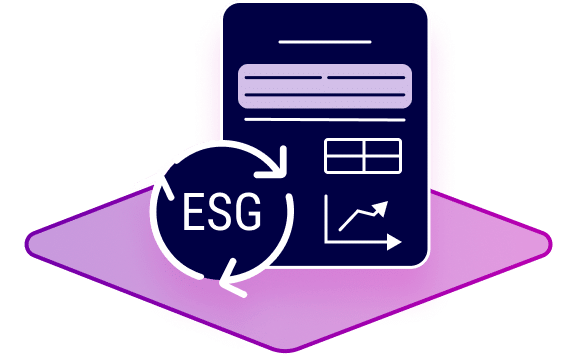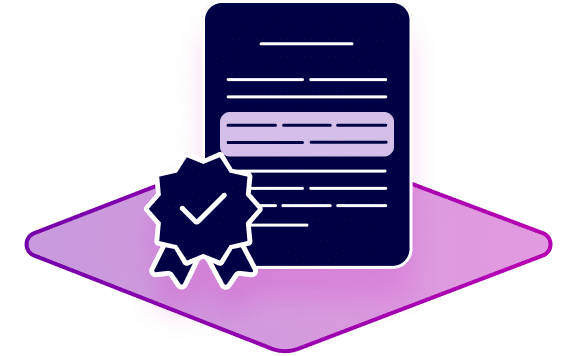
Document management: Benefits of DMS and future trends
Fast, location-independent and as automated as possible – that’s how business processes should be today. Digital document management systems are foundation of process efficiency. However, they are more than just a way to cut costs. They improve customer satisfaction, collaboration and business continuity and have thus become a strategic necessity.
What are the benefits of document management systems, what are their limitations and what are new trends in the market? Let’s take a closer look.
What is a document management system?
DMS vs. ECM vs. CMS
How does document management systems work?
Document management: advantages that speak for themselves
DMS tools: Choosing the right software for your business
Artificial intelligence in document management
Conclusion

What is a document management system?
Every day, companies create and receive new documents, in analog and digital form. Quickly, a web of physical repositories, sharepoints and local digital storage develops. To ensure that employees can easily find the documents they need in the latest version at any time, companies can use document management software, or document management systems (DMS).
DMS refers to digital applications that can be used to manage the entire lifecycle of a document. Physical documents are first digitized, then stored in a structured manner with other digital documents, made retrievable, and later archived in a legally compliant way.
Although many companies see the need for digital document management and use a DMS in one form or another, many do not take full advantage of the technological possibilities.
DMS vs. ECM vs. CMS
Document Management Systems focuses, as the name implies, documents. ECM systems manage not only documents, but all corporate content, such as e-mails, databases, videos and images. Also, they include more functions for process optimization. Thus, DMS can be considered a subset of ECM.
A content management system (CMS), however, has no overlap with a DMS. Users can use CMS solely to publish content to websites and other digital channels.
How does document management systems work?
Traditionally, document management software entails five core functions: They support capture, indexing, distribution and archiving, and deletion.
Capture
Digital documents are automatically captured by the DMS. Physical documents can be captured via artificial intelligence software or optical character recognition (OCR) and transferred to the DMS.
Indexing
Captured documents are indexed by the system to simplify later retrieval. Companies can decide which criteria and keywords they want to use for indexing. The extent to which manual and automatic indexing are available depends on the software.
Distribution
Modern document management software automatically distributes new documents to the responsible teams and integrates the files into existing workflows. Depending on the configuration, the software can notify users of certain incidents and trigger processing steps automatically.
Archiving
Documents that are no longer needed in the day-to-day operations can be archived in the document management system in a legally compliant manner. Once the rules have been configured, archiving takes place automatically, reducing the load on operational IT systems.
Deletion
Documents can be deleted easily and in a law-compliant way via the DMS once the legal archiving obligations have expired.
Document management: advantages that speak for themselves
Document management systems are an investment that pays off in the medium and long term – especially when companies capture not only documents, but all content in a central platform (ECM).
Efficient collaboration
As cloud applications, DMS allow for documents to be accessed from anywhere – from home offices as well as from the business location in South America. Real-time synchronization and search functions accelerate the flow of information, minimize coordination and shorten processing time.
Compliance and data security
Integrated authorization systems enable detailed control of document access and distribution. Audit trails make it easy for compliance officers to track which employee accessed which documents and when. Managing documents in a single platform not only makes it easier to comply with compliance standards, but also to optimize IT security measures.
Customer satisfaction
Digital document management can help automate workflows. Staff in customer support and service can handle inquiries much faster when requests are automatically delivered to the right contact person and information can be found with the click of a button.
Cost savings
The introduction of a digital document management system offers many cost benefits. As a cloud solution, the applications minimize the maintenance required by in-house IT. At the same time, employee productivity increases thanks to workflow automations and fast document retrieval. The manual effort for legally compliant storage and archiving also decreases, to name just a few benefits.
DMS tools: Choosing the right software for your business
There is no shortage of DMS available on the market. In addition to well-known software giants such as Microsoft and Adobe, there are a number of specialized and established providers. Each solution has its strengths and weaknesses. For companies to make the best decision, it is helpful to make a list of requirements and evaluate offers based on their ability to make these criteria:
Which functions are a must-have? Which integrations do you need? What kind of customer service do you expect? What price range is acceptable?
Artificial intelligence in document management
Technological capabilities have evolved tremendously over the past three years. Systems that do not yet rely on artificial intelligence should be viewed with skepticism.
A major shortcoming of classic DMSs is their search function.
The applications work with keywording and an exact search: If an HR employee wants to search employees’ CVs for certain key qualifications in order to fill a project position, he or she must hit the exact wording of the document in order for the employee to be listed. If an employee writes about “supply chain” in their CV, but the recruiter searches for “logistics processes” the profile won’t show up. Advanced AI algorithms would need to be built into the application to recognize the semantic closeness of words.
Another disadvantage of classic DMSs: limited automation.
Since DMSs do not understand documents at the level of meaning, they can only recognize documents by type or keywords and replace manual processing only to a very limited extent. However, especially in customer support, questions are repetitive and answers could be created in a standardized way and sent automatically. For this, however, an AI must be integrated into the document management system that “understands” the documents as reliably as a human. This is because customers phrase their questions very differently and classic DMS cannot reliably assess the content.
Our recommendation is therefore: Check new applications for AI features and modernize existing document management systems with AI extensions to make sure your application “understands” documents on the level of meaning.
Conclusion
Document management is nothing new. Companies have done it for decades. However, the days when simple filing systems were acceptable are over. In the agile, remote-first world of work, companies can’t afford to forgo the benefits of digital systems. Not in marketing, not in product development, and not in document management.
Other factors why companies are currently investing more than ever in DMS: The move toward a paperless office, increasing compliance requirements and automation benefits. Fortune Business Insight forecasts the document management systems market to grow from $5.55 billion in 2022 to $16.42 billion in 2029.

Picture: AdobeStock / vegefox.com












